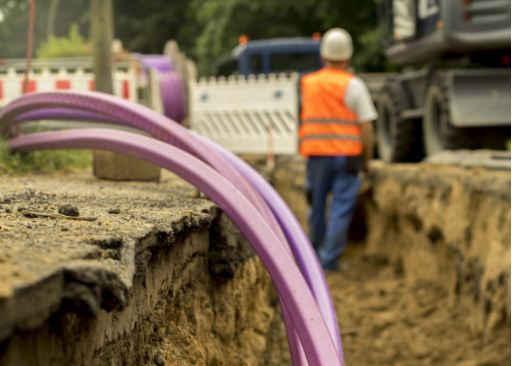CommentsCAL MATTERS - Stakeholders across California participated in a moderated discussion about the state’s digital divide and its effect on small business.
The pandemic exposed all manner of inequalities, including access to high speed internet. Almost a quarter of California households did not have broadband subscriptions in 2019, according to a report from California Broadband Council.
The pandemic also made a speedy and reliable internet connection at home more important than ever before: Patients could meet safely with their doctor via video chat, students took classes on Zoom and some business owners stayed afloat by creating an online presence for the first time.
CalMatters reporter Jackie Botts moderated a Milken Institute discussion on Sept. 21 about the digital divide in California, as well as recent efforts at the state and federal level to address the issue.
Panelists ranged from trade association leaders representing the interests of large internet service providers, to business owners in counties with spotty internet access. They discussed the main barriers to broadband access in California, what they hope to see from new state programs, and how to ensure that building new infrastructure actually translates into increased internet access.
Here are three takeaways.
- The barriers to internet access aren’t just the physical infrastructure.
There are parts of California that lack the physical infrastructure — the fiber cables, for example — for adequate broadband connections.
But not being able to afford an internet connection — either the monthly bill or an internet connected device — is another barrier for many residents. Yet another is digital literacy surrounding broadband; many Californians aren’t familiar with how to set up or use the internet. Assistance on that subject, says Sunne Wright McPeak, president and CEO of the California Emerging Technology Fund, needs to be delivered to low-income communities by trusted messengers — groups that already do outreach and can provide information in the language residents understand best.
Physical infrastructure, however, is still a major barrier. Michael Anderson, founder and CEO of Clientworks Inc., a Nevada City–based IT services company, said that schools in his area gave out 2,000 hotspots to students, but no improvements were made to cell towers. Then, cell towers in the area crashed and kids couldn’t get online. Students ended up driving to school parking lots, said Anderson, in order to get connected and do their homework.
- Places with good broadband access saw very small businesses flourish during the pandemic.
Areas that have better broadband also tend to have more microbusinesses — businesses with fewer than 10 employees — said Alexandra Rosen, senior director of Venture Forward, a multi-year study funded by web services company GoDaddy to study those very small businesses and entrepreneurs.
Venture Forward surveyed 20 million microbusinesses nationwide and found that regions with more internet-connected businesses saw lower unemployment throughout the pandemic.
“People didn’t have to let their employees go because they could shift online and service other markets,” says Rosen.
- The state and federal government has committed billions of dollars bridging the digital divide.
Bottom of Form
Several panelists brought up the estimated $7.5 billion dollars the state and federal government have committed to bridging the digital divide in California. California’s new broadband infrastructure package is one of the largest state investments in public fiber in the history of the United States, according to the Electronic Frontier Foundation.
One program in that package is a state-run open access middle mile network. CalMatters’ Jackie Botts described the network as a public information highway, off of which small roads will branch, connecting to people’s homes. The idea, Botts said, is that the state will build the highway, and internet service providers will build the private roads to people’s homes.
“We are in danger of wasting a whole lot of money if we do not focus on that last mile consumer,” said Wright McPeak of the California Emerging Technology Fund.
Carolyn McIntyre, president of the California Cable and Telecommunications Association, which represents the largest internet providers in the state, says last mile coverage will require public and private partnerships — and that local governments might be able to provide that connectivity too. McIntyre also said she hopes some of the government funding goes to grants for building last mile connectivity.
“This is a once in a generation opportunity,” McIntyre said, referring to the significant amount of government funding on the table. “It’s really important that the priorities are set correctly and that the funding goes to those areas that have the greatest need.”
Grace Gedye covers California’s economy for CalMatters. Previously, she was an editor at the Washington Monthly. She is a graduate of Pomona College. [email protected].
















